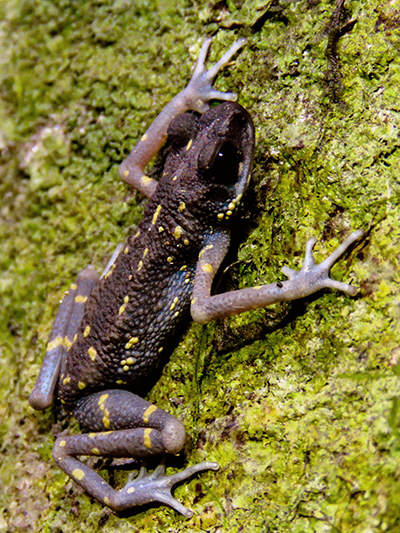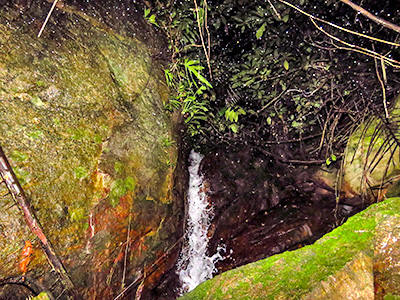 |
Fig 1
|
© Serin Subaraj |
 |
Fig 2
|
© Serin Subaraj |
|
|
|
Family : BUFONIDAE
Species : Ansonia tiomanica
Size (snout to vent) :
Females 3.7 cm, males 3.1 cm
This small species of slender toad is endemic to
Pulau Tioman (= Tioman Island), which lies in the South China Sea, off
the east coast of Peninsular Malaysia.
It inhabits stream courses in primary forests up to elevations of around
1000 metres. Niches in such microhabitats include moss-covered boulders,
small waterfalls, moist crevices and tangled vegetation.
Like other species of Ansonia, this species is slender in all
senses of the word - its body is elongate, its limbs are long and
skinny, and its digits are narrow and bony.
The skin colour of Ansonia tiomanica is dark brown to blackish,
and it has small yellow spots, flecks or bars which are sparsely
distributed on its dorsal surface and on the upper surface of its limbs.
Its chest and underside are dark.
The species appears to be fully nocturnal.
Fig 1 : Typical example clinging to a moss-covered boulder.
Fig 2 : Typical micro-habitat of this species - a rocky gully with
moss-covered boulders.
Photos thanks to Serin Subaraj
References :
IUCN SSC Amphibian Specialist Group. 2024. Ansonia tiomanica. The IUCN
Red List of Threatened Species 2024: e.T54484A245673232.
|